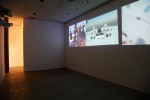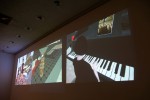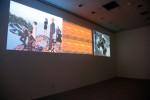In a fantasy world, are there immigrants? What does it mean to be landless in a virtual environment? What wishes could we fulfill?
“Landless in Second Life” is an exploration of immigrants’ lives, starting with my mother’s. As a single parent of six, my mother never made more than $16,000 a year. In the early 1990s, my brothers and I started a retirement fund for her called the TranFund. She died a few years after the fund was established, cutting our goal of buying her a house with the TranFund short. In collaboration with my brothers, I’ve designed a home for our mother in the virtual world of Second Life, a house filled with avatars of her children next to an all-giving tree.
About Second Life:
Presidential candidates, Ivy League universities, corporations, and non-profits are among those who have their own islands here, hoping to reach the denizens of a virtual world known as Second Life. Created by Linden Lab of San Francisco and launched in 2003, Second Life has over a quarter of a million members worldwide who create many more avatars, their “digital representation”. Visual and media artists have also engaged Second Life as an exhibition venue, subject matter, and software tool. Using the same software engine that generate images in computer and online games, many artists have produced media art, called Machinima (a composite of machine and cinema), which pushes the parameters and concepts of games themselves as well as digital media.
‘Landless in Second Life” is housed at the USC Institute for Multimedia Literacy Second Life Island
Second Life programming by Bjorn Ziggy Littlefield-Palmer
Left image on screen:
“Landless in Second Life: Nostalgia: The All-giving Tree” (2010). Video Projection with Sound
Center image on screen:
“Landless in Second Life: Fantasy: Sugar’s House” (2010). Video Projection with Sound
Right image on screen:
“Landless in Second Life: Identity: You Are What You Do” (2010). Video Projection with Sound
Thank you:
Holly Willis, Director of Academic Programs at USC’s Institute for Multimedia Literacy. Bjorn Ziggy Littlefield-Palmer for her skills, insights, and aesthetic contributions. Scripps College.
- Landless Installation View
- Landless Installation View Details 1
- Landless Installation View Details 2


